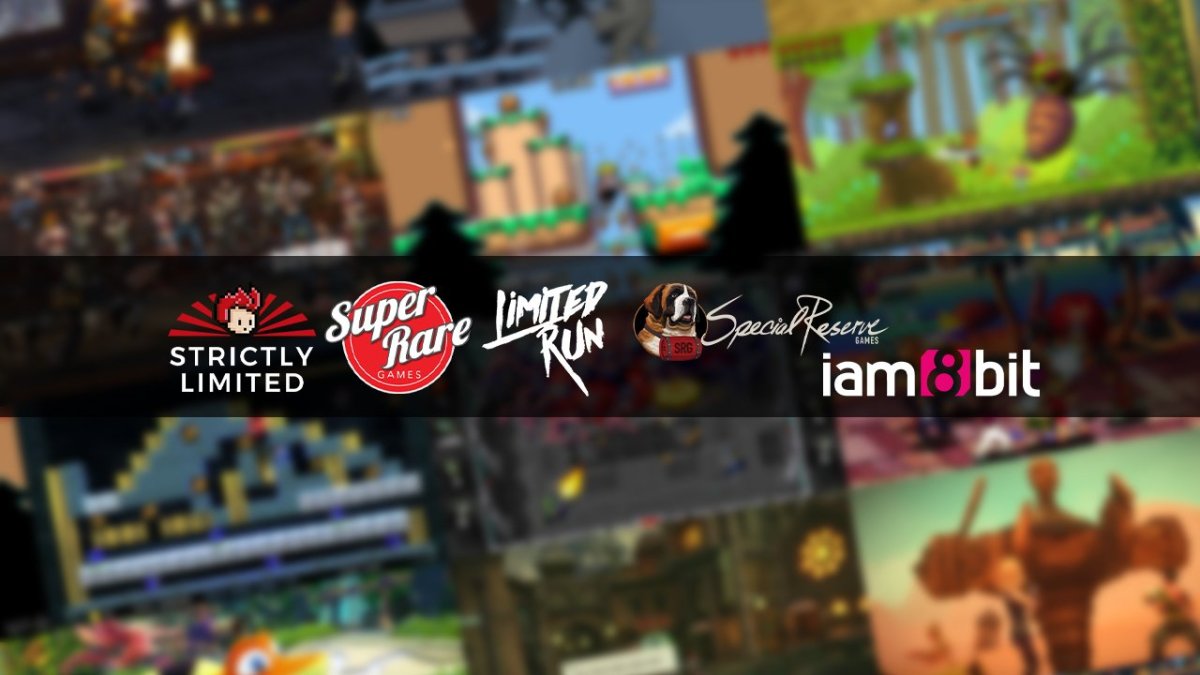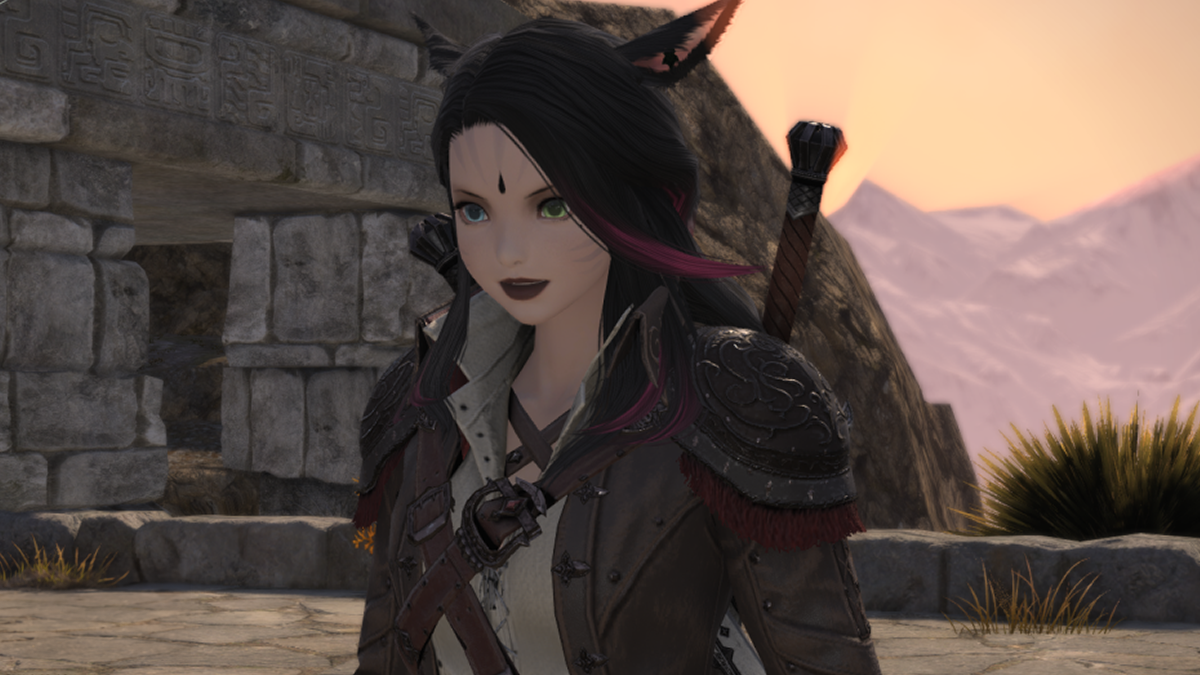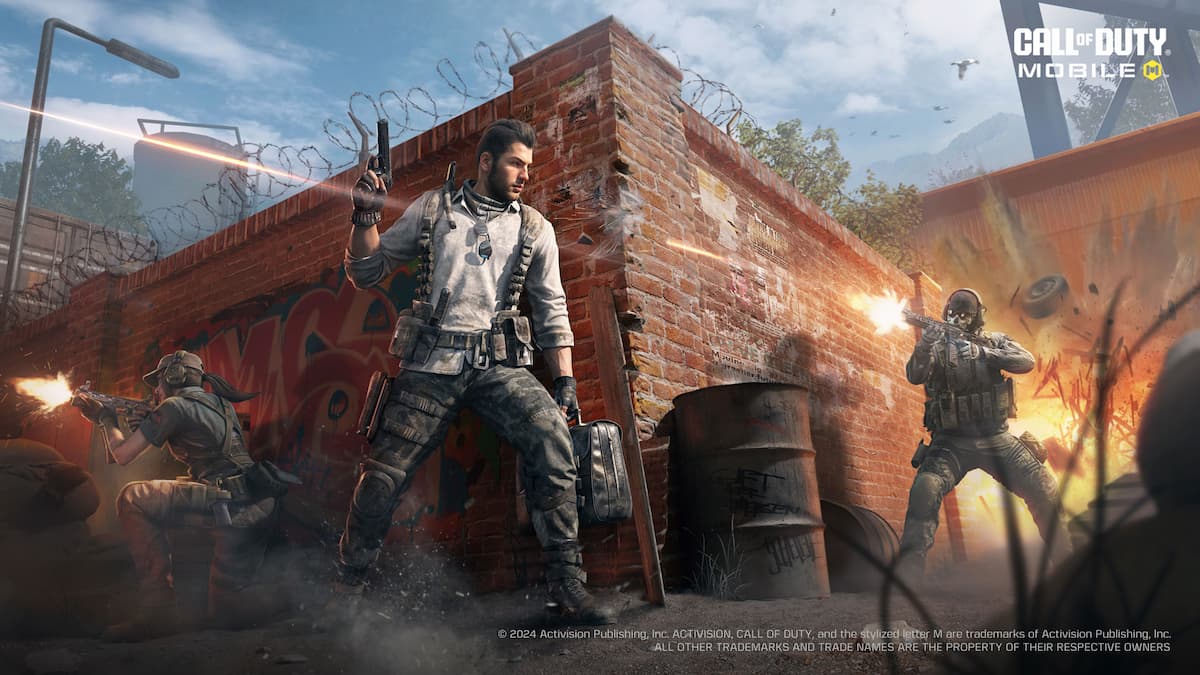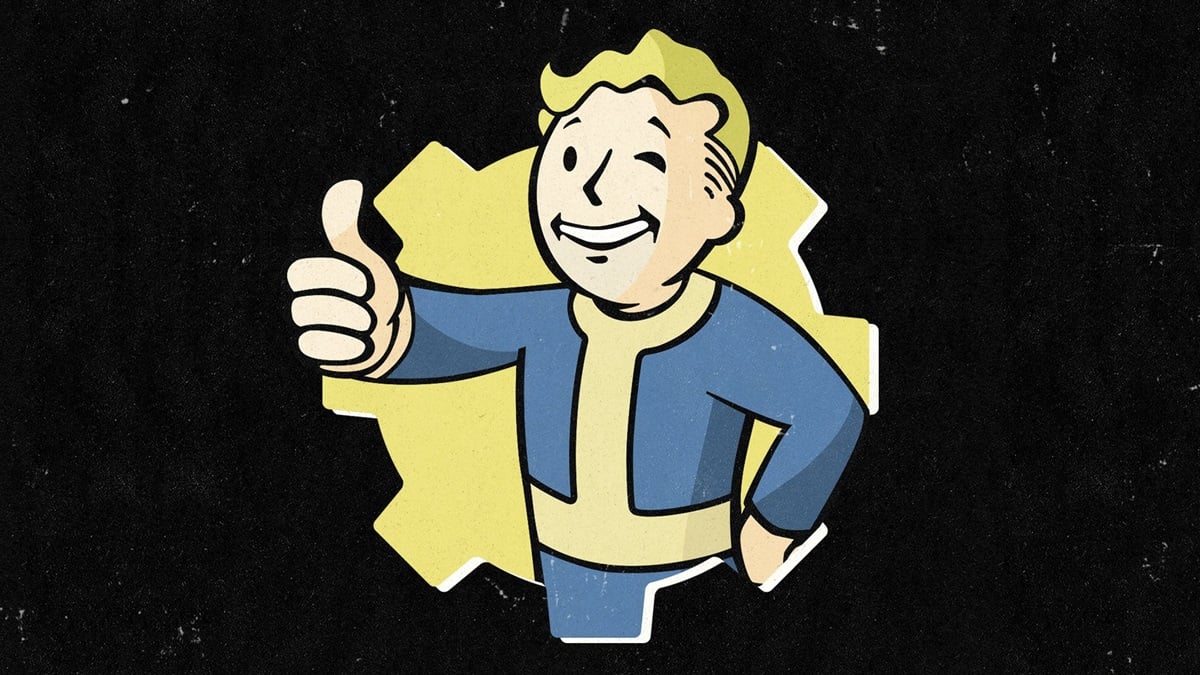It started with a game you probably don’t remember
There are many great PlayStation Vita titles that players continue to hail even to this day. Breach & Clear is not one of them. The tactical shooter was met with middling reviews when it released for the Vita in 2015. With a forgettable name and forgettable gameplay, there’s good reason to believe it should have slowly been lost to time like so many other minor Vita titles. Instead, it stands as a testament to the popularity of physical media in an age where we’re continuously pushed to go digital.
Mighty Rabbit Studios, the developers of Breach & Clear, were in an unfortunate position in 2015. Contract work dried up and its next title making the jump to console, Saturday Morning RPG, wasn’t quite ready for market. Facing bankruptcy, the developer put its efforts into a new company that would publish physical copies of its titles. Its name? Limited Run Games.
“Limited Run Games formed from a desperate situation,” says Douglas Bogart, one of the co-founders of the company. “I worked at Mighty Rabbit Studios as a tester/community manager and was asked to help start Limited Run Games with Josh [Fairhurst, founder of Mighty Rabbit Studios] as I had sales and community knowledge. We basically took a gamble if the game would sell and everyone was telling us it was insane to sell a Vita game when the platform was ‘dead.'”
With available funds, Bogart and Fairhurst produced 1,500 copies of Breach & Clear for sale on the Limited Run Games website.
It sold out in less than two hours.
“It as pretty crazy,” Bogart tells me. “We knew then there was definitely still demand for physical games and we started reaching out to other companies to see if we could help them preserve their games.”

What started as a wild gamble has birthed its own boutique physical publishing industry. Breach & Clear was followed by Saturday Morning RPG. After that, Limited Run Games released its first title not developed by Mighty Rabbit Studios, Oddworld: New ‘n’ Tasty. In less than five years, the company has published more than 300 titles, and it’s been joined by other boutique publishers all doing their part to provide physical releases for games that would otherwise be shackled to digital stores.
“We have seen how important movies have disappeared,” Dennis Mendel, co-founder of Strictly Limited Games, says, “and with video games, history is repeating itself as game preservation has still not received the attention it deserves. During my work as a game researcher, I frequently stumbled upon games that have been lost and where even the publisher was no longer in possession of a working copy. Just think of all the PlayStation Mobile titles. After PSM had been shut down, it was no longer possible to get these games on your Vita gain if your memory card died.”
I’ve previously written about digital storefronts going dark. And while the loss of cherished download-only titles isn’t stopping me from slowing converting my game collection to all-digital, it was the catalyst for my interest in this niche industry. How did it start and how did we get to the point where some publisher that didn’t exist half a decade ago is now releasing Star Wars games? To find out, I got in touch with five of the biggest names in small-scale physical publishing: Limited Run Games, Super Rare Games, Strictly Limited Games, Special Reserve Games, and iam8bit.
For Limited Run, its origins lie in a story of survival. For Strictly Limited, it was a desire to preserve the present for the future. Both companies got their start publishing titles for PlayStation consoles: Limited Run with Breach & Clear and Strictly Limited with Tokyo 42. At the time, publishing on Nintendo and Xbox consoles wasn’t feasible for these companies due to the minimum number of units required.
“Sony has such low limits on its physical [order size] it really helped foster and build the physical video game collector community to what it is today,” says Jeff “Smitty” Smith, CEO of Special Reserve Games. “So all praise goes to the PlayStation 4 and the Sony teams.”
With the successful launch of the Switch, Nintendo’s attitude toward small-scale publishing changed. It dropped its minimum limit to 5,000 units — or 3,000 in the case of Nintendo of Europe — and a developer named George Perkins saw an opportunity.
“I was working at a leading porting studio called Warp Digital,” Perkins, head of Super Rare Games, explains to me in an email. “At the time, I was working as a Producer on a number of projects. Two of these were called Human: Fall Flat and The Flame in the Flood. When it came time to end both projects, I inquired to whether both games would get a physical release on the Switch. They replied that they had no plans on either.”
Perkins used his own money to fund the physical release of both titles. They would end up the first two releases from Super Rare Games, a company that works exclusively on Switch titles.
“[Nintendo] were very receptive to the idea,” Perkins says, “and agreed to let us become a publisher very quickly. I flew to their German headquarters and presented them with our first three games [Human: Fall Flat, The Flame in the Flood, Snake Pass]. They were big fans of the titles we showed. I would say it took a few weeks in total to sort it out.”
That sentiment is reflected by all the publishers I speak with. Sony and Nintendo have been welcoming of this niche industry, allowing it to thrive and supply collectors with games that otherwise would be lost once the storefront dies.
“Sony and Nintendo have been amazing partners,” Amanda White and Jon Gibson, co-owners of iam8bit, tell me. Unlike the other companies I corresponded with, iam8bit didn’t start as a small-scale publisher. The arts and entertainment collective had an established history doing marketing events for Sony and Nintendo before publishing its first game, including creating an Uncharted escape room and leading a Paper Mario crafting contest. Its move into boutique publishing was a natural extension of what the collective was already doing.
“iam8bit has been around for 15 years,” they explain, “so when we started licensing gaming IPs to make cool collectibles, no one else was doing that. Literally no one.”
Unlike Limited Run, Super Rare, and Strictly Limited, iam8bit limits itself on which digital publishers it works with. While it has produced physical copies of games from Double Fine and Heart Machine, it is most associated with its output of Annapurna Interactive titles.
“Our relationship with Annapurna Interactive predates the company itself by many years. The founder of it ran the indie division of PlayStation out of Santa Monica Studios, nurturing games like Flower, Hohokum, Journey, and so many others, and iam8bit collaborated with them on several marketing projects there. We knew their tastes would align with ours and that together, iam8bit and Annapurna would be able to make some really amazing products.”
White and Gibson paint a portrait of a perfect partnership with Annapurna, praising their executives, business acumen, and drive. It’s a symbiotic relationship, much like the one Special Reserve Games shares with Digital Devolver.

“My first company that I was a part of was Terminal Reality,” Smith explains, “and we were making games for Windows 95. We went on to become a founding developer of Gathering of Developers, or GodGames. I left Terminal Reality for GodGames to work under my good friend Mike Wilson.”
Wilson, along with Harry Miller and Rick Stults, would go on to find Devolver Digital in 2009. Smith, who had left the industry for a crazy career in music, saw an opportunity to return to games with the budding small-print publishing industry. He pitched the idea to Wilson, and the two agreed to do a test run on the concept with Shadow Warrior 2 as a PC-only Special Reserve Games release. The physical edition was well-received and began a partnership between the two companies that has now spanned more than 10 titles across three platforms. Surprisingly, one of the sources of information for Smith as he pursued this avenue, was Limited Run Games’ Josh Fairhurst, even as he worried they would swoop in to secure Devolver’s catalog.
“Josh Fairhurst and Doug Bogart have always been exceptional good friends with everybody I believe,” Smith explained, “and Devolver had published a title that they did under the developer Mighty Rabbit [Games]. Josh and I actually talked about this concept as I was getting it off the ground with Devolver, so there was very much a little bit of loyalty I think among old friends, but we also hold each other to such a high standard.”
My emails and conversations with the publishers answer several of the burning questions I have about small-scale publishing. Sony and Nintendo don’t give discounts for ordering more units, so they’re charged the same price per disc or cartridge as the bigger publishers are. I learned Nintendo dictates the minimum MSRP for physical copies and that Sony has disc printers here in the United States.
Unfortunately, I couldn’t get much information on the profit split between the physical publishers and the game developers, other than it varies from title to title, but I learn the reason these companies can profit on such small quantities is that they sell directly to consumers and don’t need a warehouse to store their product in.
“Selling 5,000 copies of a game with us is probably equivalent to selling somewhere between 60,000 – 100,000 copies through a traditional approach,” Perkins says.
While Special Reserve and iam8bit are comfortable with their publisher partnerships, the others have to compete for titles. Not every game that’s proposed is approved. All three publishers revealed there have been games they were looking to publish only to have the developer decline or go with another publisher. Despite that, they reiterate it’s a friendly rivalry, and the publishers admit to being fans of each others’ work.
Perhaps the biggest question I have about this niche industry is how the publishers choose which games go physical. Some are obvious choices, like Golf Story or Snake Pass. Others, like Sisters Royale or the recently announced Black Bird, are a bit more puzzling.

“When we first started,” Bogart explains, “we made a wish list of games we wanted to see physical. Thankfully, we actually secured a lot of those games. Over time, as we grew larger and grew a following, developers started reaching out to us. Overall, I’d say it’s definitely a 50/50 split now on if we reach out versus them reaching out to us.”
The split is less even with Super Rare Games, where Perkins says the 80% of the published titles come from them reaching out.
“At the start, it was just me signing games I loved and wanted to have on my shelf,” he says. “Now, it’s a bit more data-driven and picking titles which have a lot of interest in a physical version of them. This means we also can hit genres I wouldn’t usually play myself.”
“We get contacted by devs from all around the world,” Mendel adds, “and sometimes wonderful projects arise, like the Vasara Collection which we co-funded.”
The explosion of this new collector’s market has proven to be a boon for retro enthusiasts as well. Last year, Strictly Limited revived the long lost pre-DICE title Hardcore as Ultracore. Limited Run is producing old-school console controllers and previously sold NES and Game Boy Star Wars cartridges. Legacy cartridges have also proven popular with iam8bit, which released an SNES cartridge of Street Fighter II to celebrate the 30th anniversary of the franchise.
“We’d been eager to start an offshoot label of iam8bit that would pay tribute to the seminal, historic games from the cartridge era,” White and Gibson tell me. “There’s still an amazing install base for NES, Genesis, SNES, and other consoles thanks to companies like Analogue and Hyperkin manufacturing new systems and in tandem with those new systems, there is an incredibly thoughtful restoration effort going on, ensuring that a 30-year-old NES can actually still function.”

iam8bit’s and Limited Run’s expansion into classic console cartridges probably wouldn’t be possible without the work and dedication of enthusiasts. And that’s true for all five companies, no matter if they’re trying to market old games or new. Their titles wouldn’t consistently sell out if not for a bevy of collectors who want to see these games on their shelves, even if it means missing out on it for a while.
“Most of the time,” Smith says, “I’m producing a game and it’s not day-and-date. So I got one or two months post-release and in that respect, I lose the fervor and excitement of a new game coming out. I couldn’t survive if I didn’t have ravenous, emphatic fans of these video games and the developers. There’s no way I could sell boxed copies of games that you have to wait for months to get even after you give me your money. There are so many extra steps that just wouldn’t make sense in a normal business.”
Despite the sometimes long waits for the physical copies — anyone who ordered the Limited Run edition of Celeste knows what I’m talking about — the boutique publishing industry is on solid footing. Nintendo and Sony are continuing to keep minimum quantities low so these companies can survive, and I get hints there may be changes afoot at Microsoft in this regard as well. Each has big plans going forward, with iam8bit saying the wheels are already in motion for 2022 releases.
I had a lot of questions about the boutique physical publishing industry before I set out to write this article. While almost all of them were answered, my biggest takeaway from these conversations is the zeal these companies have for what they do. In less than half a decade, these publishers have proven themselves to be an indispensable part of the games industry. This isn’t just a business to them, a way to make money off collectors and fans. It’s more than that. It’s a passion; a passion for games, for indies, for cool collectibles, and for preserving the art we’re enjoying today for generations to come.
(Edit: A previous version of this article stated Nintendo’s minimum units requirement was 5,000. The article has been updated to reflect Nintendo of Europe’s minimum units requirement, which is 3,000.)





